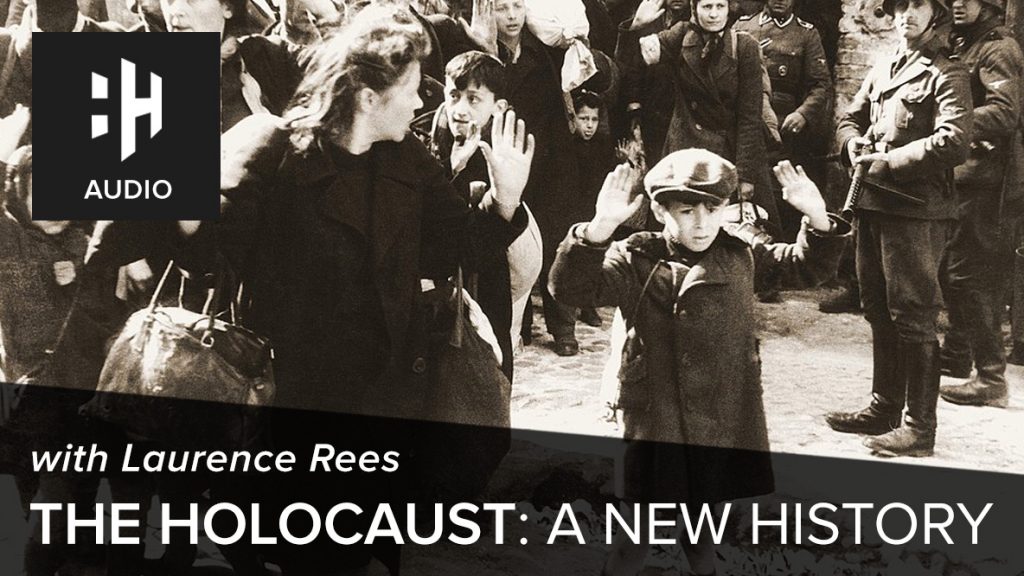
After Adolf Hitler became Reich Chancellor of Germany on 30 January 1933, he set about creating a series of race-based policies, targeting those who did not fit into the Nazi ideal of an Aryan society. Many of these were embodied in the 2,000 anti-Jewish decrees passed during the Nazi reign, which came to an end when Germany officially surrendered to Allied forces on 2 May 1945.
Background
In 1920 at its first meeting, the Nazi Party published a 25-point program declaring their intention to revoke the civil, political and legal rights of the Jewish people and segregate them from what they considered to be Germany’s Aryan society. Besides Jews, the Nazi interpretation of Utopia included the eradication of others groups considered deviant or weak.
 Listen Now
Listen NowBesides Jews, there was no place in the Nazi vision of German society for other ethnic groups considered to be ‘foreign’, mainly Romani, Poles, Russians, Belarusians and Serbs. Nor could communists, homosexuals or Aryans with congenital diseases find a home in their impossible and unscientific concept of a racially pure and homogenous Germany or Volksgemeinschaft.
Public enemy number one

1 April 1933, Berlin: SA members take part in the labelling and boycott of Jewish businesses.
The Nazis considered the Jewish people to be the principal barrier to achieving Volksgemeinschaft. Therefore most of the new laws they planned and later introduced were focussed on depriving Jews of any rights or power, removing them from society and eventually killing them.
Shortly after becoming chancellor, Hitler organised a campaign of boycotts against Jewish-owned businesses. Jewish shops were painted with Stars of David and potential trade was ‘discouraged’ by the intimidating presence of SA stormtroopers.
Anti-Jewish laws
The first official anti-Semitic law was the Law for the Restoration of the Professional Civil Service, which the Reichstag passed on 7 April 1933. It stripped Jewish public servants of employment rights and banned all non-Aryans from employment by the state.
The subsequent ever-increasing number of Anti-Jewish laws was extensive, permeating all facets of normal life. Jews were banned from everything from sitting university exams, to using public parks to owning a pet or a bicycle.

Nuremberg Laws: Graphic of the new policy banning marriage between Jews and Germans.
September 1935 saw the introduction of the so-called ‘Nuremberg Laws’, principally the Law for the Protection of German Blood and German Honour, and the Reich Citizenship Law. These racially defined Jews and Germans, including definitions and restrictions for those deemed to be of mixed Jewish and German heritage. Thereafter, only those considered pure Aryans were German citizens, while German Jews were relegated to the status of state subjects.
Other laws
- After just a month in power Hitler banned Germany’s Communist Party.
- Shortly after came the Enabling Act, which made it possible for Hitler to pass laws without consulting the Reichstag for 4 years.
- Soon trade unions were banned, followed by all political parties except the Nazis.
- On 6 December 1936 membership in the Hitler Youth became compulsory for boys.
The Holocaust
 Listen Now
Listen NowAfter the stripping of all rights and property, the culmination of policies against Jews and others legally defined as untermenchen, or sub-human, by the Nazi regime was extermination.
A realisation of the Final Solution, which was revealed to senior Nazi officials at the Wannsee Conference in 1942, the Holocaust resulted in the deaths of an estimated 11 million in total, including circa 6 million Jews, 2-3 million Soviet POWs, 2 million ethnic Poles, 90,000 – 220,000 Romani and 270,000 disabled Germans. These deaths were carried out in concentration camps and by mobile killing squads.














